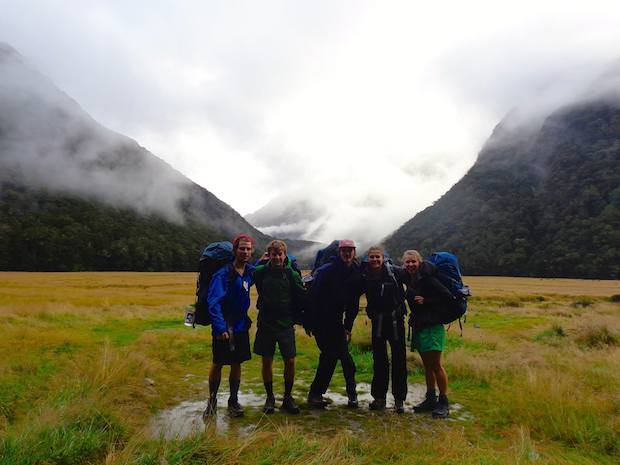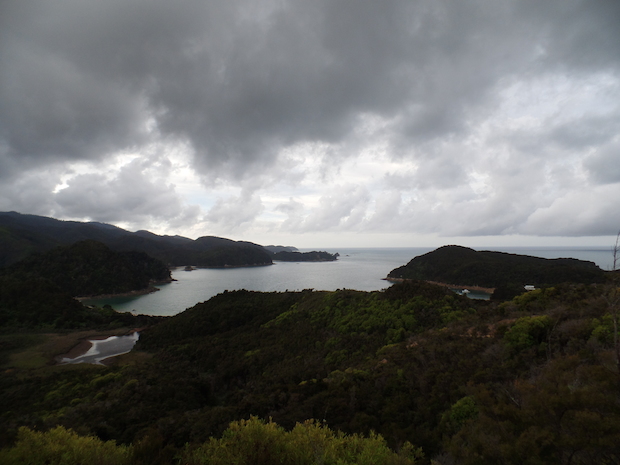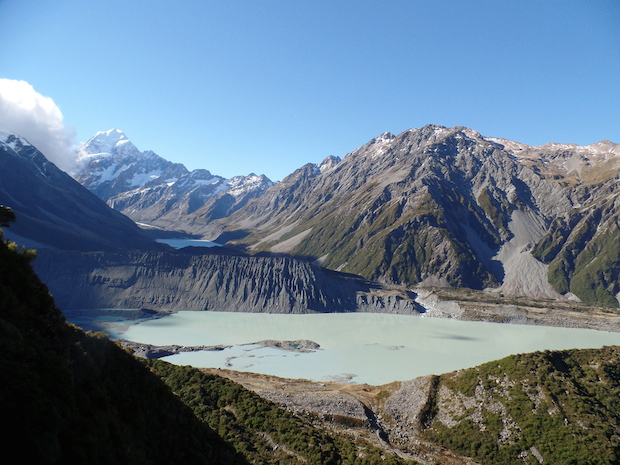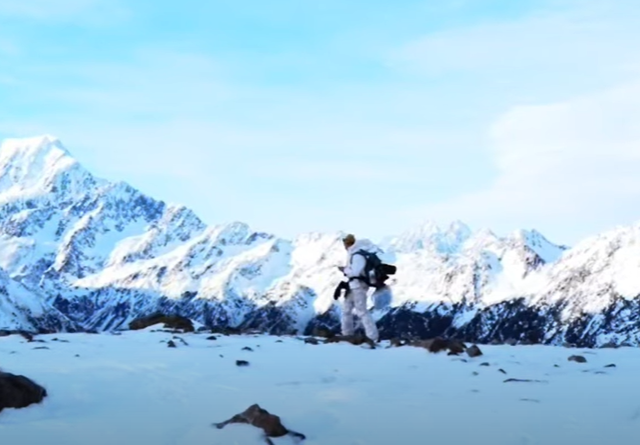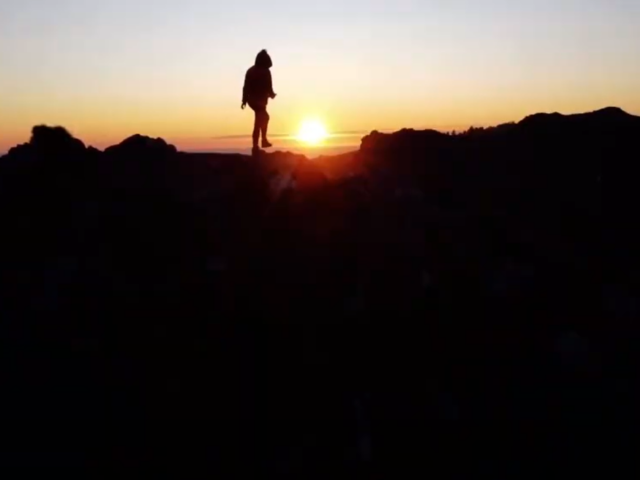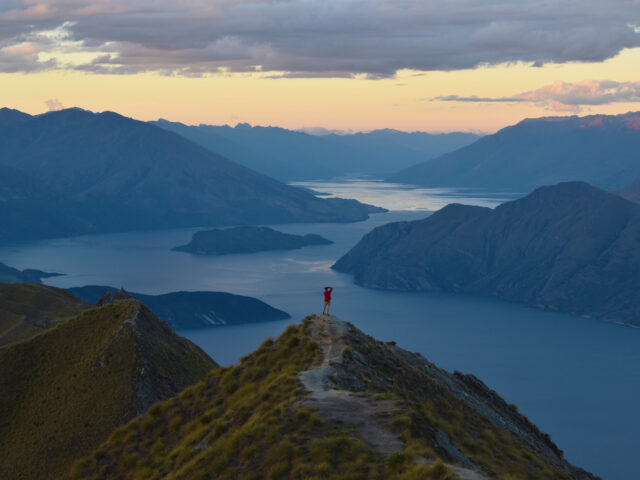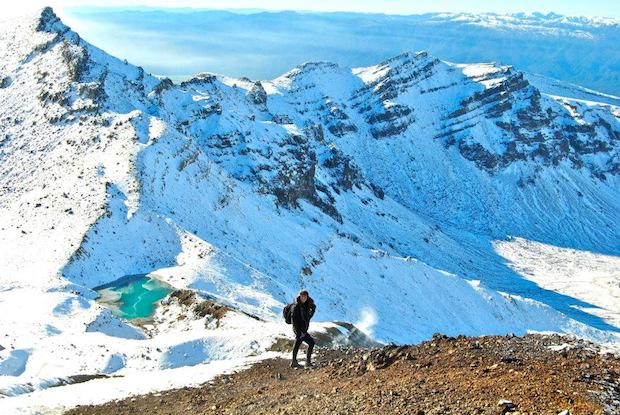
To many, hiking (or tramping, as it is called in New Zealand) may seem like a foolish waste of energy; understandably, the idea of spending long hours, even days, ascending mountains via steep inclines and sometimes dangerous terrain with no tangible reward or object of reward waiting at the top, only to turn around and retrace your exact path may sound hardly enjoyable. And then there’s the sheer discomfort of it all; the heavy packs, sub-par food choices, lack of WiFi connection, and smelly, cold sleeping conditions. Tramping, as it may seem, is perhaps the purest form of humanity’s outright pigheadedness, a stubborn display of escapism and waste of time and energy. So why would anyone ever want to subject themselves to such misery in such a pointless way?
Before coming to study abroad in New Zealand, I had very little hiking experience, and had never tackled a multi-day hike or trekked for more than a few hours at a time. I have always enjoyed the outdoors, and wanted to take the opportunity to fully immerse myself in nature while abroad, which was a big part of my decision to come to this country. New Zealand is home to some of the most beautiful and sought after hikes in the world, including nine “Great Walks”, the premier Kiwi hiking tracks that take participants through some of the most diverse and remarkable scenery that the country has to offer.
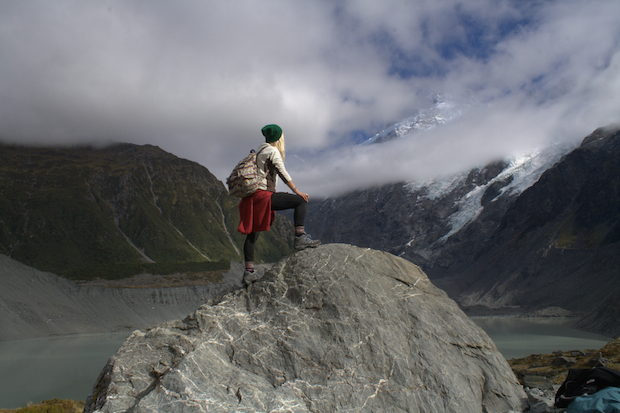
During each hike that I undertook, the appeal of climbing mountains became increasingly clear to me; I realized the emotional rewards of reaching a summit, the feelings of joy and triumph that accompany the newfound perspectives after long hours of hard work, and the unrivaled ability of nature to cleanse the mind of stress and worry. I’ve found hiking to be an extremely calming activity that provides ample time for meditation, often yielding a feeling of utmost mental clarity and awareness that I believe can only come from the peace and quiet of nature. But I have found the most important factor in determining the quality of a tramping trip to be the group of people involved. The right group of people can make even the most mundane of hikes or brutal conditions much more enjoyable. Being off in nature for extended periods of time strips people of their societal identities, leaving their personalities naked; left without technology, makeup, or excuses, hiking trips are the perfect environment for friendships to grow and strengthen. The discomforts of living outdoors end up being the most enjoyable parts—the dirt, the smell due to lack of showering, the cold, and the rain only add to the experience, bringing the group closer as they endure the conditions together.
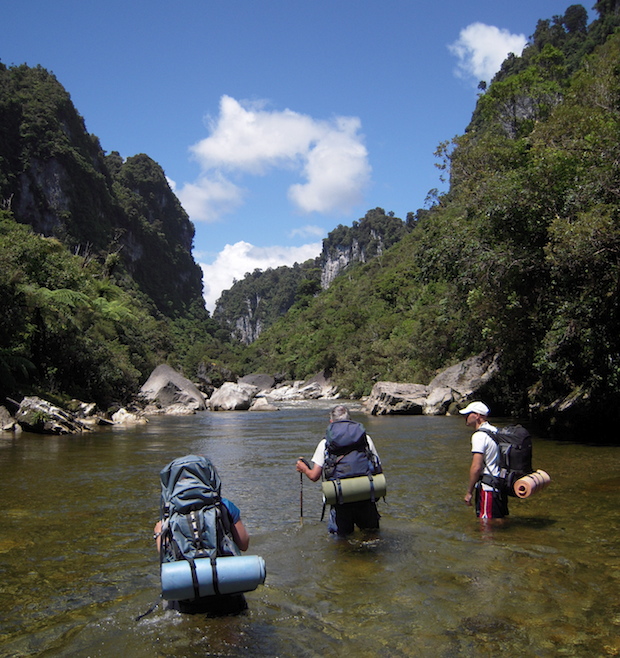
The goals of hiking are never to achieve something tangible, but the rewards waiting at the end are far more worth it than any material prize could ever be. The views that New Zealand peaks have to offer hold a beauty that cannot be captured by a photograph, described by words, or even perfectly preserved by memory; the feeling that they create can only be felt once in that moment at the top, no matter which Instagram filter you use. Above all, the most valuable aspect of hiking is undoubtedly the change of perspective it provides, both literally and figuratively. From the top, we are able to see the world from a different viewpoint, the extreme heights making the bottom seem all the more beautiful than they seemed before. The exposure to the elements can also make us appreciate the comforts of home that we often take for granted, and while the enjoyment of hiking makes them hard to miss, it always feels nice and refreshing upon returning to the warmth of the great indoors. Hiking is the perfect means of safe exploration, powered by the same motives that take people to places like New Zealand in the first place.
The Routeburn Track
The first overnight hike I went on was the Routeburn Track, a Great Walk that traverses the Southern Alps, and consists of pathways carved through lush beech forests and steep, rocky trails overlooking an array of stunning mountain scenery. Unfortunately for my group, the thick, foggy skies and heavy rain prohibited us from seeing more than six feet in front of us for much of the trip, leaving us with view after view of gray, bleak clouds covering what we believe should have been mountainous backdrops. Luckily, the fog temporarily lifted on the third day of our trip, and we were able to experience a taste of true New Zealand mountain scenery.
The Abel Tasman Coastal Track
Unlike most other walks, the Abel Tasman is relatively flat and takes participants across several sandy beaches and through deep, exotic rainforest trails, and boasts a generally warmer climate because of its northerly location. Once again, the weather conditions were far from desirable, and we spent most of the hike under pounding heavy rain and unbearable humidity that soaked everything including our tents, clothes, and sleeping bags. The wet conditions, along with the heavy presence of mice at our campsites, made sleeping very difficult and greatly diminished our group’s morale and enthusiasm, but the picturesque scenery was undeniable, and (for me, at least) made for an enjoyable and unforgettable experience.
The Mueller Track
Out of everything I have seen in New Zealand, the most beautiful and rewarding tramp I have been on thus far is undoubtedly the Mueller Track, a three to four hour hike to the summit of Mt. Oliver, overlooking the stunningly beautiful panoramic scenery of Mt. Cook National Park. The ascent, which includes 2,000 stairs built into the side of the mountain along with rugged rocky paths and steep, slippery trails, is the most challenging hike I have done despite its relatively short length compared to the great walks. Atop the mountain, the view extends for miles, and includes dreamlike perspectives of neighboring snow-capped peaks, where avalanches can frequently be seen and heard, echoing like thunder through the mountain passes.
Jack Shea is a student at University of New Hampshire and a TEAN Featured Blogger. He is currently studying abroad with TEAN in Dunedin, New Zealand.


